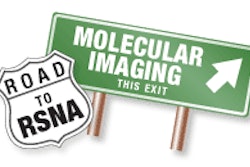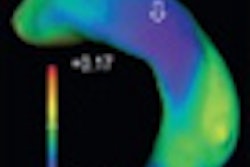Wednesday, December 1 | 3:30 p.m.-3:40 p.m. | SSM18-04 | Room S505AB
FDG-PET/CT is helpful in accurately assessing disease and can provide significant prognostic information in patients with urothelial cancer. So concluded researchers from Johns Hopkins University in Baltimore in their study scheduled to be presented Wednesday afternoon at RSNA 2010.Study co-author Muhammad Chaudhry, MD, a PET/CT fellow in Johns Hopkins' division of nuclear medicine, said the study is significant because limited research exists on the use of FDG-PET/CT in bladder cancer.
"This is partly due to clinicians' impression that bladder cancer is not FDG-avid and, secondly, its utilization is hampered by excretion of FDG into bladder," Chaudhry added. "However, I believe it is useful, especially in the settings of recurrent disease, preoperative staging, and restaging for nodal and metastatic disease assessment."
The retrospective study included patients with bladder cancer who underwent imaging between July 2003 and December 2009. Patient records were reviewed for clinical follow-up, imaging, and laboratory studies performed within 90 days of the FDG-PET/CT or until death.
A total of 70 patients underwent clinical FDG-PET/CT imaging over a period of approximately six years, with complete data available in 58 cases. Six patients underwent staging PET/CT, while the remaining 52 patients were referred for a restaging PET/CT scan. Whole-body FDG-PET/CT was negative in 13 patients.
In patients with positive FDG-PET/CT results, one- and two-year survival rates were 55% and 25%, respectively. For patients with negative FDG-PET/CT results, one- and two-year survival rates were 100% and 82%, respectively.
FDG-PET/CT also achieved 81% sensitivity and 88% specificity in local disease assessment. For pelvic nodal disease, sensitivity was 70% and specificity was 98%.
Sensitivity and specificity for metastatic disease were 92% and 85%, respectively.
Given the results, Chaudhry and colleagues concluded that FDG-PET/CT is useful in assessing patients presenting with recurrent and/or residual bladder cancer, and the hybrid imaging modality should be considered for evaluating these patients.




















